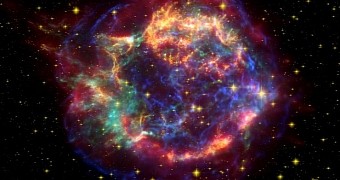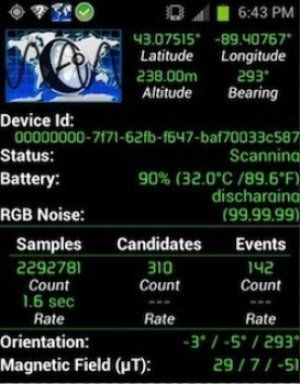As it turns out, one does not necessarily have to embrace a career in astrophysics to study cosmic rays and then act all cool while spilling the beans on the behavior of high-energy particles over a drink with ignorant folks.
On the contrary, brainiacs with the University of Wisconsin-Madison in the US have made it so that, simply by owning an Android smartphone, anyone can become an armchair astrophysicist.
Long story short, these scientists are the creators of an app that they say can turn Android smartphones into cosmic ray detectors. Otherwise put, the app turns such phones into pocket research devices.
“The apps basically transform the phone into a high-energy particle detector,” physicist and app designer Justin Vandenbroucke sums up the end goal of this innovative research project.
Because it enables Android smartphones to capture cosmic rays entering our planet's atmosphere, the app was named the Distributed Electronic Cosmic-ray Observatory.
The good news is that it's been trained to answer to the much shorter moniker DECO as well, so ordinary folks don't have to strain their neurons trying to remember its actual name. They can save all their brain power for exploring cosmic rays.
What's the deal with cosmic rays anyways?
The scientists behind this research project explain that cosmic rays originate from stellar explosions and black holes. They are basically high-energy subatomic particles that we don't see. Heck, most of us don't even know they exist.
When reaching our planet and crashing with its atmosphere, cosmic rays birth secondary particles dubbed muons. It is these muons that the DECO app enables Android smartphones to detect and record.
“Cosmic rays are produced by exploding stars, in the aftermath of the same explosions that distribute the matter that you and I are made of,” says Justin Vandenbroucke.
“These cosmic rays are traveling through us all the time but usually we can’t see them. The app gives people a chance to literally take pictures of these energetic messengers from across the galaxy,” the physicist goes on to explain.
Using smartphones to detect cosmic rays
The University of Wisconsin-Madison specialists say that, when muons collide with the semiconductor underpinning a smartphone camera, they liberate a charge and create a signature in pixels. It is this signature that the app helps log, store, and analyze.
The catch is that, if they want to use the app and their smartphones to detect cosmic rays, people must either be in a dark area or simply cover the camera lens with tape. Otherwise, the camera will detect light and that will pretty much be the end of the let's-play-the-astrophysicist session.
“The phone can then be placed screen up just about anywhere, even in a desk drawer as muons can penetrate matter much like X-rays. Left running, an idle phone can be set to record images, which are then analyzed to search for particle events.”
“DECO works by taking an image every couple of seconds. The DECO app analyzes the image and if enough pixels light up, it gets recorded as an event. Particle tracks from both cosmic rays and radioactivity in the environment can be recorded,” the scientists explain.
Potential uses for this technology
Truth the told, the odds that this app will one day make the observatories used by actual astrophysicists obsolete are slim to none. Still, its creators expect a whole lot of people will want to download it.
Thus, they say that the app can be used for educational purposes. In fact, they admit that they created it especially for folks who are still learning about particle physics and astronomy and who wish to have some fun detecting particles themselves.
“It would be great to get students and the public interested in gathering data and understanding the particles around them, things they ordinarily don’t get a chance to see,” says Justin Vandenbroucke.
As mentioned, the app currently works on Android phones alone. However, the University of Wisconsin-Madison scientists expect that it will not be long until it becomes available for other operating systems.

 14 DAY TRIAL //
14 DAY TRIAL // 

